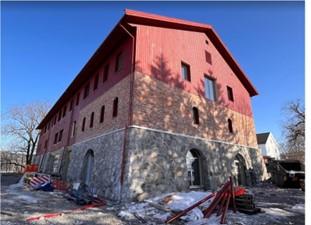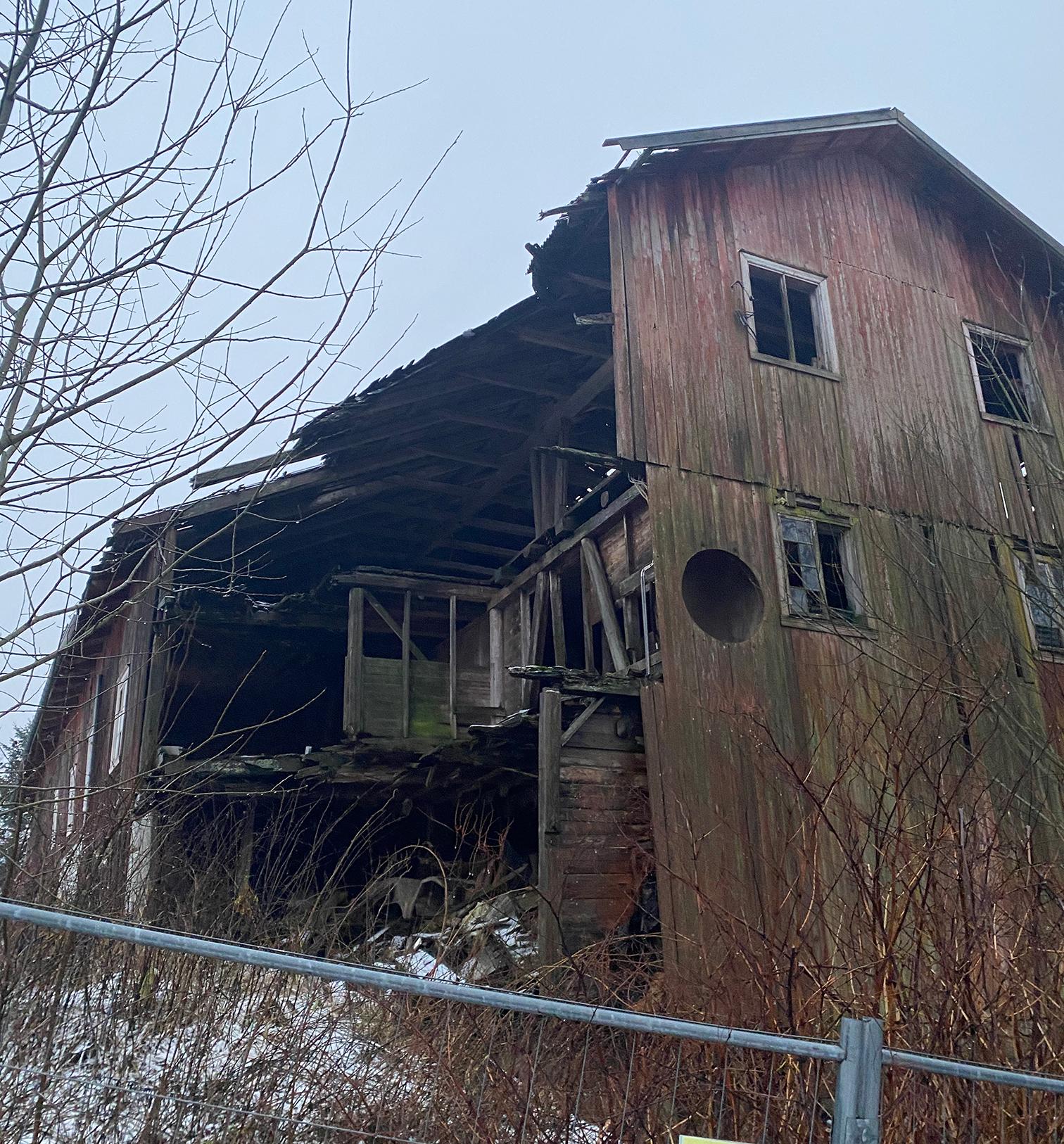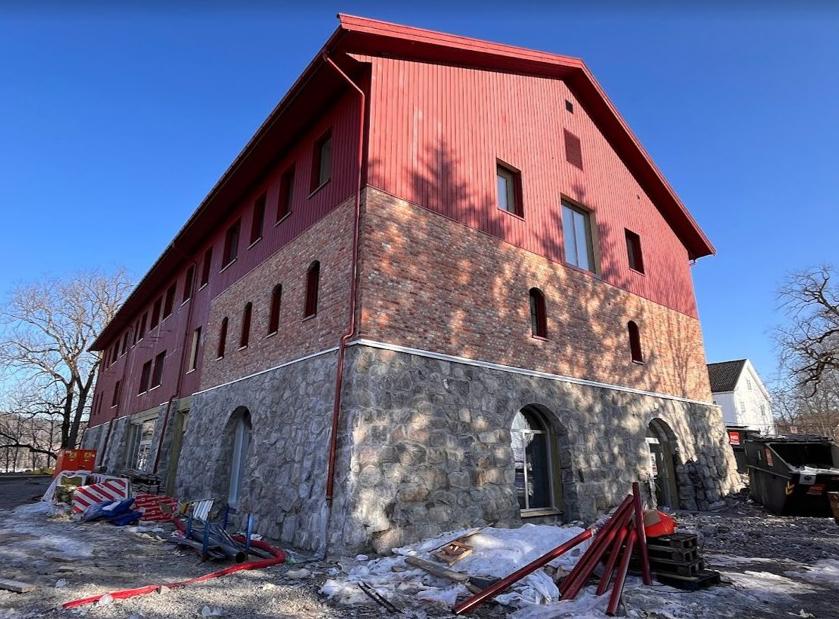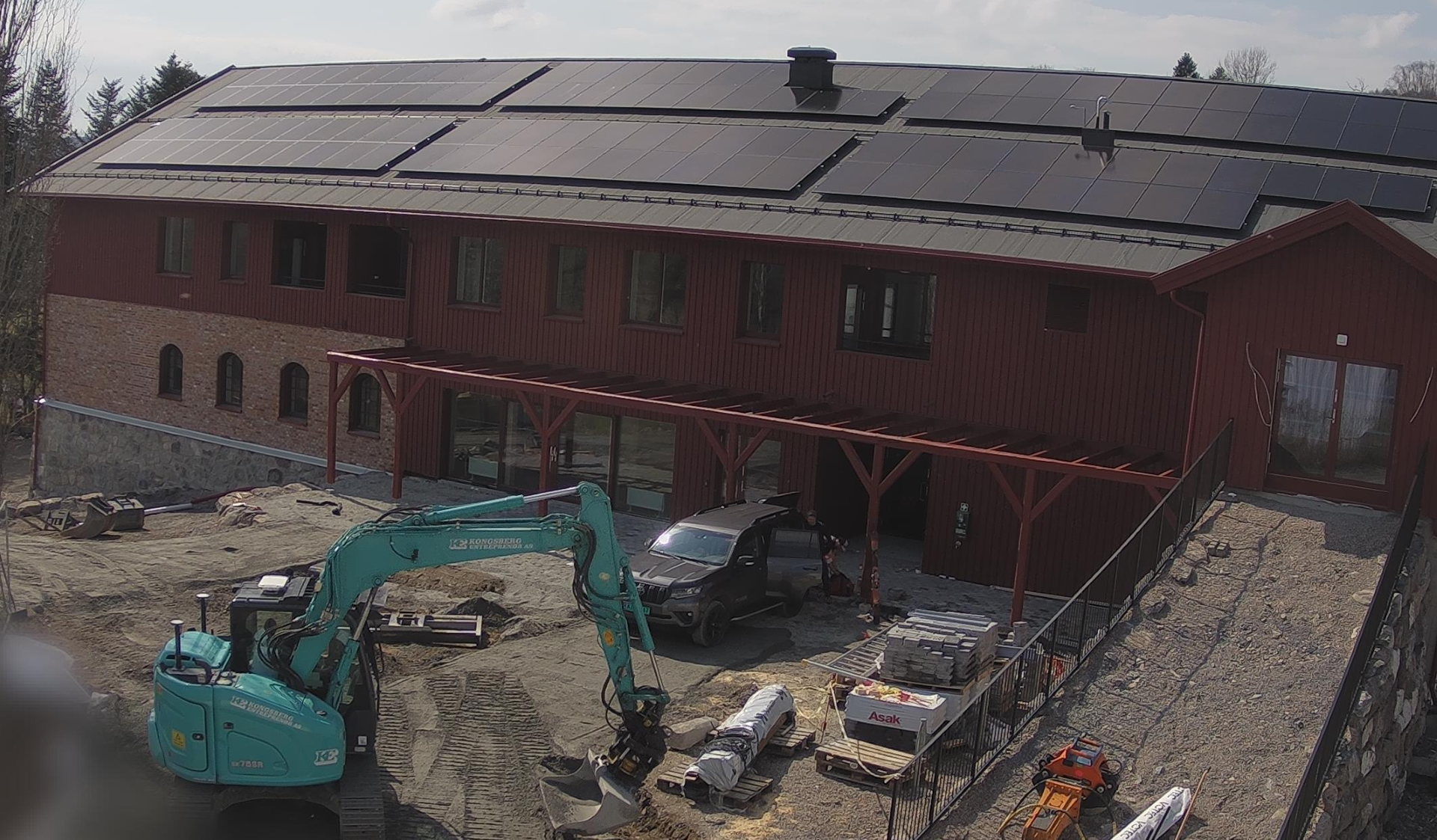CCRI success: Pilot Asker city transforms ruined barn into modern cultural hub
Published on 18.03.2025
The Circular Cities and Regions Initiative (CCRI) Pilot municipality of Asker has carried out a large-scale renovation of a dilapidated barn in the Norwegian countryside. The ‘Nedre Sem’ barn was identified as not fit for use. So, the architectural company Future Built, in cooperation with Asker’s authorities, renovated the barn and used over 400 tons of original and 700 tons of recycled building materials to make a fresh space with an historic exterior.

More information
Completed in April 2024, the renovated Nedre Sem barn was constructed by Future Built, a Norwegian innovation programme that focuses on designing sustainable buildings and circular construction projects.
Designed using circularity principles, such as sustainable and low energy use, green mobility, bio-based and recycled materials, and innovative design alternatives to plastic in mind, Asker and Future Built designed Nedre Sem barn to look like the original barn on the outside, built in 1887.
However, on the inside, the former barn is now a cultural hub that contains a work centre, carpentry workshop, commercial kitchen, farm shop, administration office, accommodation, and six apartments for people with disabilities.
The problem: Embedded greenhouse gas emissions in Europe’s aging building stock
Built in 1887, the old Nedre Sem barn had fallen into disrepair over many years and had to be completely dismantled.
However, the European Environment Agency estimates that 20–25% of the life cycle emissions of the current EU building stock are embedded in building materials, and demolition releases huge amounts of these greenhouse gas emissions.
Preserving the cultural heritage of the area is important to the Asker municipality and, for a CCRI Pilot, circular building principles are essential. By avoiding the use of new materials in construction projects and reusing the original materials, circular renovations like Nedre Sem barn can delay, reduce or prevent the release of embedded greenhouse gas emissions.
A circular solution that respects the rural history, the environment and local people
As a circular building project, Nedre Sem offers a solution to a common problem faced by many cities and regions across Europe: the need to renovate aging building stocks.
The new Nedre Sem barn not only looks like the original structure but is also built out of the original building materials. Aiming to reuse as much of the original barn as possible and preserve the original look of the barn’s exterior, Future Built carried out the renovation by assessing and testing the nearly 140-year-old construction beams, bricks and stone elements for safety.
Beams were tested by the Norwegian Institute of Wood Technology, which were reused as load-bearing columns on the second floor, and the research organisation SINTEF tested the bricks, which were reused in the building’s new cladding.
Overall, the project reused 400 tons of material from the original barn. And, the project ensured that out of the 1 700 tons of new material used in the building, 700 tons was recycled material.
In addition, more than 800 tons of the building material is defined as suitable for future reuse, meaning that the same circularity principles can be reapplied should the barn ever need to be refurbished or developed.
Now, the renovated space is a hub for the community, fostering local businesses through the inclusion of a work centre with a carpentry workshop, a commercial kitchen, and a farm shop, and the six new apartments are accessible for people who have disabilities.
The new barn has succeeded in promoting social cohesion and fostering the local economy, all while respecting its history and the environment.
Helping to meet European Green Deal objectives
Nedre Sem barn was officially opened in August 2024 in the presence of the mayor of Asker, Lene Conradi, who said: ‘the project is a contribution to pushing the construction industry in a greener direction.’
In line with the European Green Deal’s decarbonisation and circularity ambition, the project’s green practices include operating the construction site to be approximately 90% emission-free by using electrical machinery. The building also conforms to a near-zero energy standard through using insulation, geothermal energy wells and solar panels on the roof.
Lene Conradi continued: ‘With Nedre Sem barn, a new era begins. This project shows that it is possible to think in new ways, solve challenges in new ways and constantly strive towards the most sustainable solutions. With the Nedre Sem barn, we are breaking down some barriers and setting a new standard.’




built environment, CEAP2 key product value chain
<5 000



